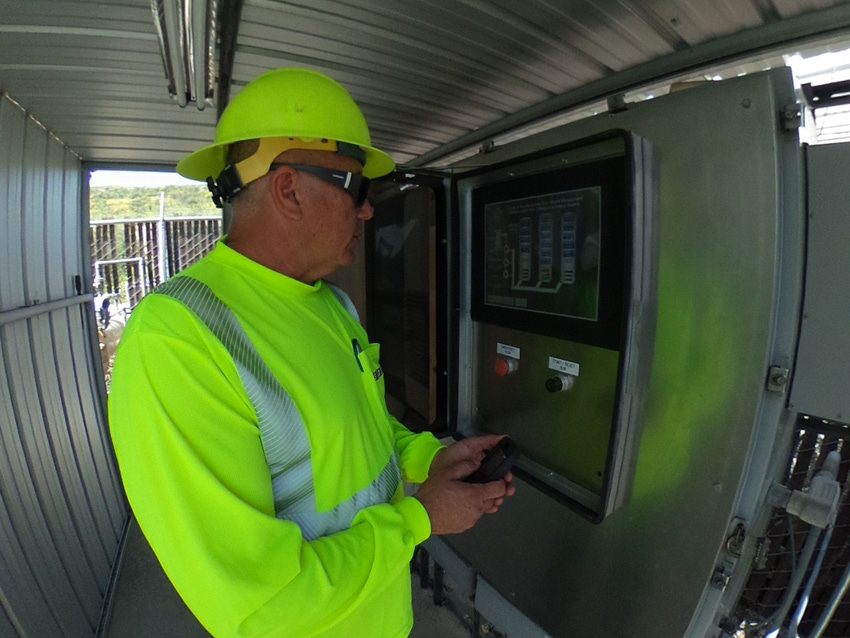
A few years ago, Sonoma County, Calif., divested all of its disposal operations, reducing its workforce from about 53 full-time employees to only three. However, the county still had to oversee gas collection and other activity, so it invested in technology that can monitor remotely, send alerts in case of a potential problem and sometimes even remediate remotely.
The system was developed by SCS Engineers, an environmental consulting and construction firm that has customized similar systems for other clients that integrate separate sensors and controls in one package. SCS’ Remote Monitoring and Control (RMC) network includes features like visualization, alarms and data recording.
“The technology enables operators to accurately identify what’s happening within a system and fix it without being there, saving in operational and maintenance expenses as well as time,” says David Hostetter, regional manager for SCS Engineers. “For instance, if there’s a power outage or other issue requiring you to reset the flare, you can reset remotely.”
Particularly in the Northeast, the technology has been of value to reduce risk of the freezing and bursting of leachate pipes, with alarms alerting operators if temperatures drop below a certain point.
Besides monitoring for specific parameters, the system also tracks things like if a blower is on or off or a motor’s operating speed.
Data can be used to alert a potential problem that may require a quick response, and information can be tracked over time, showing histories to help develop maintenance plans.
RMC enables the information to be integrated into an e-tool platform, which is an online database.
“Typically, operators keep data in Excel spreadsheets, but with this platform, it’s stored on a website with mapping capabilities. It can be used for reporting as well as to visualize what’s going on in the field,” says Hostetter.
A control screen with graphics, data and cameras can show liquid levels in a tank, for instance. Cameras can record people coming in and out of the site, and alarms can alert operators if an unauthorized person enters the property.
Sonoma County’s system was originally intended to monitor power and pump stations. It has since been expanded.
“We are adding flow meters to several sites to track costs to haul leachate to wastewater treatment plants,” says Glenn Morelli, geologist for Sonoma County Department of Transportation and Public Works. “We have also expanded capabilities to make callouts and send emails when certain monitored parameters are reached. Overall, we are very happy with the system, especially given its resiliency during critical times, which has allowed us to deploy resources where they are needed with limited staff. For example, during the winter storms of 2017, we could pull up our web-based portal and see if our remote sites were functioning properly. We could also see where power was down and deploy staff to deal with those issues. This was especially useful for our contracted wastewater haulers because we could identify where storage tank facilities were approaching full capacity so trucks could be sent.”
Remote monitoring and maintenance was not common 10 years ago, and what did exist was fairly basic. Technicians had to go to a site and monitor, for instance, each well in a gas collection system, says Brian d'Ingee, regional sales manager for Quantum Automation, an industrial automation controls distributor in Southern California.
“Now, about half of landfill applications [such as pumps, blower systems and flare stations] have automatic data logging and control abilities. This is a growing trend,” says d’Ingee.
Today, “You may have two leachate pumps going. If there’s more liquid than both pumps can handle, then the pump feeding into the main pump is alerted to stop sending to it. So, you have one pump station talking to the next one,” says Anne Germain, vice president of technical and regulatory affairs for the National Waste & Recycling Association (NWRA). “Among even more sophisticated applications we are starting to see are those with the ability to control every individual well in a combined system. Valves adjust for flow based on sensory readings of gas quality.”
Falls River, Mass.-based Loci Controls has come online with technology to simultaneously monitor multiple wells remotely, measuring for pressure and gas composition among metrics, with valves automatically adjusting to optimize gas collection.
As operators look to cut costs and improve efficiency, especially if they are capitalizing on their landfill gas, industry experts see automation within these spaces further advancing.
About the Author(s)
You May Also Like




